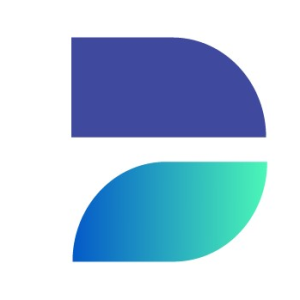What is our primary use case?
We are protecting our personal and sensitive information, while we provide test data to our customers for their business-as-usual and project testing.
How has it helped my organization?
One of the ways DATPROF has added value is that three years ago, before we had the solution, when an audit was done for non-SAP applications, there were always red flags. We, as a company, were not able to protect the data. The demand for doing so was there, but in big organizations you need the willingness as well. Once we found DATPROF, the red flag issue was eliminated. Audit-wise, we are now compliant.
And our customers are also happy because when they do any kind of project, it's not only about internal users because the systems are being exposed to multiple external people. That is where we are now able to protect our data.
For non-SAP, before we had DATPROF, we used a couple of workarounds. For example, we would write an SQL query to change a phone number from A to B, but for all phone numbers. If we had 40,000 customers and 40,000 phone numbers and wanted to mask the phone numbers, we would write a query to change all the phone numbers to 123-456-7890. But that's not scrambling, that's just a mass change, and it was manual work. Now, the results we get do not look like masking because it's real masking.
What is most valuable?
The data scrambling, the masking, is the most valuable feature. That is how we protect our personal and sensitive information. That is very important for Heineken, given that we work in global scenarios with a lot of personal information and business-sensitive information. This feature is particularly helpful.
It is a very intelligent solution when it comes to identifying the dependencies and connections and it is easily scalable.
It allows a type of self-service where we are not dependent on the supplier to do the work. Our team members can do things themselves.
It is also extremely important that DATPROF's masking for non-SAP databases also integrates with SAP TDM, out-of-the-box. We have operations in more than 100 countries and a majority of those operations use SAP applications. But some of our very important regions, such as the Americas and Asia-Pacific, are using Microsoft Dynamics NAV and Oracle as their core ERPs. That means we have some customers who are in both SAP and non-SAP. When we do scrambling for different applications, it is extremely important that DATPROF and the SAP applications talk to each other and synchronize.
Otherwise, for example, if the name Mano is changed to Frank in an SAP system, but the same Mano is changed to Albert in a non-SAP system, that means Mano has two names in two different systems. That means that identity is lost, from a name perspective.
It is also quite efficient, as we are doing data refreshes regularly.
What needs improvement?
I feel that we have to do a lot of reworking of the template implementations. We implemented two applications and have been using them for the last three years, but now we are adding two more. There is less reusability because we have to start from scratch. Maybe it is a limitation, but as a customer, it feels like we need to start from scratch every time. It would help if we could reuse at least some of what we have already done.
For how long have I used the solution?
I've been using DATPROF for three years.
What do I think about the stability of the solution?
The solution is stable. We have not seen any outage situation or any problems.
What do I think about the scalability of the solution?
It's easily scalable. If we could reuse a couple of things, it would be even better.
Currently, the solution is live in two ERPs: Oracle and Microsoft Dynamics NAV, and we are covering about 25 countries. We are also now deploying it in two master data platforms: Mendix and TIBCO.
We will increase our usage of the solution. We are just at the start. We have not even done 10 percent of our applications.
How are customer service and support?
After three years, the consultant who initially implemented our solution is still there. That is great for us because our team is well coordinated with that person. It's like he's a part of our team.
And we have a good agreement regarding support. SOWs are defined and we always get timely support. Our engagement model is really easy. We have a good agreement with DATPROF regarding the maintenance model. There are two types of maintenance. One is the maintenance of the solution, such as if the solution is not working or an upgrade is needed. The other is our "business-as-usual" maintenance. We run a lot of refresh projects and we use DATPROF services to ensure that all the templates are good and that the connection is good. That way, during project execution, we don't have any problems. We also have standby support.
I have no complaints about support.
How would you rate customer service and support?
Which solution did I use previously and why did I switch?
For non-SAP, we did not have a previous solution. We went with DATPROF because we wanted a platform that would be scalable across non-SAP technologies. While SAP can have multiple types of software, such as ERP, EWM, S/4HANA, Central Finance, SRM, the technology platform is the same. It's all the same stack. It doesn't matter what purpose you are using it for. But when it comes to non-SAP, the scope of technology is unlimited. It could be Oracle or Java or whatever.
We had so many applications and doing manual workarounds was, first of all, time-consuming. In addition, we were not sure if we had complete masking. Maybe we weren't aware of everything that needed to be scrambled or masked. That is why we wanted an intelligent tool that could identify what the customer-name-related dependencies are and do the scrambling. Finally, we wanted DATPROF because of its integration with SAP tools.
How was the initial setup?
The initial deployment was complex but that was on our side, not from their side. We were not properly organized to provide them with the right access and with decisions from our stakeholders about what needed to be scrambled. Those are the things that took time.
The moment we had decisions, the deployment was super quick. It took a week or two weeks' time. Their consultant who worked with us was really good.
There were five people involved in the implementation on our side: two guys from my team, two from business, and one from hosting. My team members are the only users of DATPROF in our company.
Our implementation strategy followed a normal Waterfall process.
What was our ROI?
Within one month of when we first deployed the solution, we had a refresh and we saw the value. The moment we did the refresh and we scrambled, the business realized that the sensitive data was no longer visible in the system.
We are not measuring DATPROF outcomes in monetary terms. We are measuring it through business value. Our return on investment is not because we saved a certain amount of money. The ROI for us is the business value and that value comes from the fact that we protect our personal and sensitive data, and we are compliant with GDPR.
What's my experience with pricing, setup cost, and licensing?
DATPROF is not cheap but it is also not very expensive. The pricing is good for us and it is good when looking at the market.
The licensing can be improved because it restricts the number of users. I prefer a licensing model that gives me freedom. If they want more money, it's okay if they charge me one time, but don't ask me to pay for each additional user. That is DATPROF's model and that can be improved. If I need to add a user that requires a new discussion, which is something I want to avoid.
Which other solutions did I evaluate?
We evaluated IBM InfoSphere Optim and one other.
When we did a comparison of the vendors during an initial scope, everybody came with their best features. That made it really difficult to assess what was good and what was bad. But what we saw, first of all, was that the responsiveness of DATPROF was good.
Also, we had EPI-USE, which is a DSM for SAP solutions, and we got a recommendation from them for DATPROF as a solution that integrates with EPI-USE to do consistent scrambling. We don't know whether Optim or the other solution we looked at could have done that or not, but DATPROF's integration with EPI-USE was already a proven fact. That was an added advantage for DATPROF.
We had also used Delphix, but we stopped using it to take EPI-USE and DATPROF. We never used Delphix for non-SAP applications, but cost-wise, there was no comparison when looking at the cost of DATPROF. Delphix was super expensive. That is exactly the reason we didn't want to continue with Delphix. We saved a substantial amount by going with DATPROF. Also, I did not know until we decided to offboard Delphix that it can work for non-SAP applications. They marketed it to us for SAP only.
What other advice do I have?
In my experience, the majority of applications in big companies, like Heineken, are SAP. Up to 20 percent of their systems are non-SAP. Since DATPROF cannot work on SAP, its intelligence for integrating with SAP DSM solutions is a reason that people should prefer this solution. Maybe there are others in the market, but if somebody asks me, I would definitely recommend DATPROF.
Which deployment model are you using for this solution?
On-premises
*Disclosure: PeerSpot contacted the reviewer to collect the review and to validate authenticity. The reviewer was referred by the vendor, but the review is not subject to editing or approval by the vendor.




